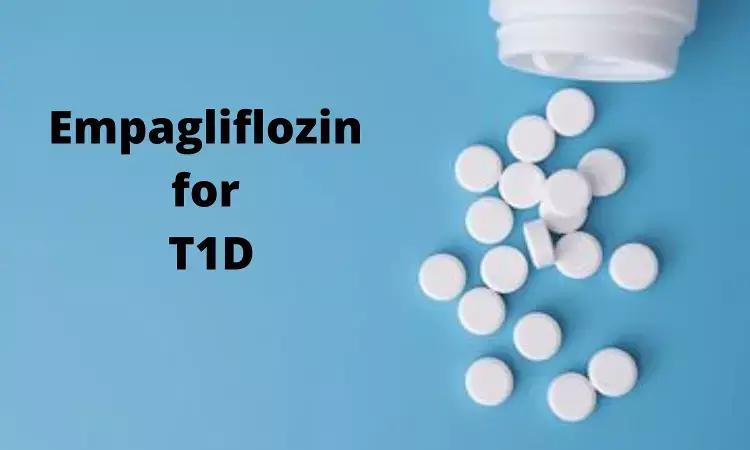- Home
- Medical news & Guidelines
- Anesthesiology
- Cardiology and CTVS
- Critical Care
- Dentistry
- Dermatology
- Diabetes and Endocrinology
- ENT
- Gastroenterology
- Medicine
- Nephrology
- Neurology
- Obstretics-Gynaecology
- Oncology
- Ophthalmology
- Orthopaedics
- Pediatrics-Neonatology
- Psychiatry
- Pulmonology
- Radiology
- Surgery
- Urology
- Laboratory Medicine
- Diet
- Nursing
- Paramedical
- Physiotherapy
- Health news
- Fact Check
- Bone Health Fact Check
- Brain Health Fact Check
- Cancer Related Fact Check
- Child Care Fact Check
- Dental and oral health fact check
- Diabetes and metabolic health fact check
- Diet and Nutrition Fact Check
- Eye and ENT Care Fact Check
- Fitness fact check
- Gut health fact check
- Heart health fact check
- Kidney health fact check
- Medical education fact check
- Men's health fact check
- Respiratory fact check
- Skin and hair care fact check
- Vaccine and Immunization fact check
- Women's health fact check
- AYUSH
- State News
- Andaman and Nicobar Islands
- Andhra Pradesh
- Arunachal Pradesh
- Assam
- Bihar
- Chandigarh
- Chattisgarh
- Dadra and Nagar Haveli
- Daman and Diu
- Delhi
- Goa
- Gujarat
- Haryana
- Himachal Pradesh
- Jammu & Kashmir
- Jharkhand
- Karnataka
- Kerala
- Ladakh
- Lakshadweep
- Madhya Pradesh
- Maharashtra
- Manipur
- Meghalaya
- Mizoram
- Nagaland
- Odisha
- Puducherry
- Punjab
- Rajasthan
- Sikkim
- Tamil Nadu
- Telangana
- Tripura
- Uttar Pradesh
- Uttrakhand
- West Bengal
- Medical Education
- Industry
Add on Empagliflozin to automated insulin delivery improves glycemic control in type 1 diabetes

USA: A new study showed that the use of empagliflozin as an adjunct to automated insulin delivery (AID) improved glycemic management in adults with type 1 diabetes (T1D) without increased hypoglycemia risk. The study data was published in Diabetes Technology & Therapeutics.
Type 1 diabetes (T1D) is a disease of multiple hormonal and metabolic impairments. Overall, T1D affects nearly 20 million individuals worldwide. In addition to deficient insulin secretion from the pancreas, patients experience insulin resistance, increased cardiovascular disease risk, increased glucose reabsorption by the kidneys, and other abnormalities that are not directly addressed by current treatments. Medications that can be used alongside insulin to simultaneously improve glycemic control and target other metabolic abnormalities are needed.
Empagliflozin, a sodium-glucose co-transporter-2 (SGLT2) inhibitor is an FDA-approved, newer class of agents that act in an insulin-independent manner to improve glucose control while demonstrating significant cardio-renal benefits in type 2 diabetes. Their use as adjuvant therapy to insulin in T1D, however, has been controversial.
Automated insulin delivery (AID) systems are now commercially available and have improved the management of glycemia in people with T1D. These systems have performed better than traditional insulin replacement strategies concerning a greater percentage of glucose time-in-range (TIR), lower time in hypoglycemia, and reduced glucose variability. Most AID systems consistently improve overnight control, but previous studies have shown their limitations in achieving optimal daytime control.
Garcia-Tirado J, University of Virginia, USA, and colleagues conducted a proof-of-concept, safety, and feasibility study to assess whether daytime glycemic control using a commercially available hybrid AID Control-IQ™ (CIQ) system or predictive low glucose suspend (PLGS) Basal-IQ™ (BIQ) system can be improved by a low-dose (5 mg/day) empagliflozin adjuvant therapy.
Researchers enrolled a total of 39 adults with T1D for an 8-week outpatient clinical trial. Patients were randomized to receive 5 mg/day of empagliflozin (EMPA) or no drug (NOEMPA) as an adjunct to insulin therapy. Analysis was done according to the intention-to-treat principle. Participants were also randomized to sequential orders of AID (Control-IQ) and PLGS (Basal-IQ) systems for 4 and 2 weeks, respectively. The primary endpoint was percent time-in-range (TIR) 70–180 mg/dL during daytime (7:00–23:00 h) while on AID.
Key findings of the study,
• On AID, EMPA versus NOEMPA had higher daytime TIR 81% versus 71% with a mean estimated difference of +9.9%.
• On PLGS, the EMPA versus NOEMPA daytime TIR was 80% versus 63%, mean estimated difference of +16.5%.
• One subject on SGLT2i and AID had one episode of diabetic ketoacidosis with non-functioning insulin pump infusion site occlusion contributory.
The authors conclude that an addition of 5 mg daily empagliflozin to AID or PLGS systems significantly improved daytime glucose control in individuals with T1D, without increased hypoglycemia risk. However, the risk of ketosis and ketoacidosis is still a concern. Therefore, future studies with SGLT2i may need modifications to closed-loop control algorithms to enhance safety.
Reference:
Garcia-Tirado J, Farhy L, Nass R, Kollar L, Clancy-Oliveri M, Basu R, Kovatchev B, Basu A. Automated Insulin Delivery with SGLT2i Combination Therapy in Type 1 Diabetes. Diabetes Technol Ther. 2022 Jul;24(7):461-470. doi: 10.1089/dia.2021.0542. Epub 2022 Mar 14. PMID: 35255229.
BDS
Dr. Hiral patel (BDS) has completed BDS from Gujarat University, Baroda. She has worked in private dental steup for 8years and is currently a consulting general dentist in mumbai. She has recently completed her advanced PG diploma in clinical research and pharmacovigilance. She is passionate about writing and loves to read, analyses and write informative medical content for readers. She can be contacted at editorial@medicaldialogues.in.
Dr Kamal Kant Kohli-MBBS, DTCD- a chest specialist with more than 30 years of practice and a flair for writing clinical articles, Dr Kamal Kant Kohli joined Medical Dialogues as a Chief Editor of Medical News. Besides writing articles, as an editor, he proofreads and verifies all the medical content published on Medical Dialogues including those coming from journals, studies,medical conferences,guidelines etc. Email: drkohli@medicaldialogues.in. Contact no. 011-43720751


